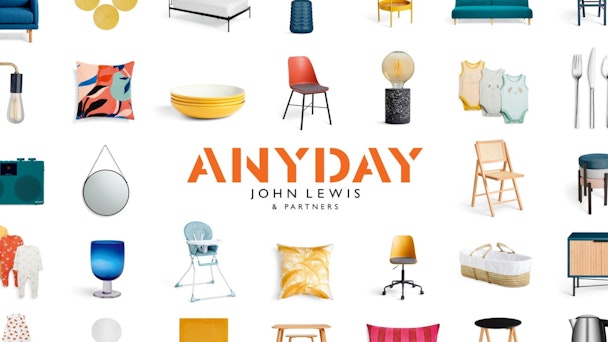Globalization doesn’t mean globally consistent without context
As the economy recover from the depths of 2020, Carat’s global client and brand president Fiona Lloyd says it is important to remember that, in the age of globalization, this is not a universal recovery. As part of The Drum’s Globalization Deep Dive, she tells us how brands need to know their different customer segments and develop strategies to use the right messages in the right context.

Established companies, including John Lewis, are creating new budget lines to appeal to more cost-conscious customers
In a global, interdependent world, we can neither look at just ‘one global plan’ nor look at markets in isolation. We need to see the bigger picture. As the world recovers from the disruption of the pandemic, we must be mindful that this recovery hides some stark differences by market and within markets that will affect how consumers think and behave for years to come.
This is a year of economic recovery and, thankfully, ad spend is also rising to near pre-pandemic levels. Data from the OECD projects a global increase in GDP of 5.7%, with some above this average (China, 8.5%) and others lagging (Saudi Arabia, 2.3%).
Similarly, our own ad spend forecasts paint a rosy picture overall with a 10.4% rise, taking us above 2019 levels, but again this hides local disparities. While spend in North America is projected to grow by 13.7% and western Europe by 7.5%, inevitably some markets will lag the average, including growth of only 3.4% in Spain and 3.3% in Germany.
As an industry, our advertising targeting has become even more sophisticated, with digital media giving us new abilities to target messages at certain audiences while being almost invisible to those not in that group. When done smartly, it has enabled brands to offer different messages to different groups based on demographic, geographic and other factors. Dynamic content optimization also enables automatic variations in creative copy, to either make the advertising more personal and engaging or to ensure that people are not shown products that are out of stock in their area.
We need to use these capabilities now more than ever to ensure that, as recovery comes, we tailor our messages using our understanding of audiences and adopt a more personalized approach to drive effectiveness.
Those of us lucky enough to be able to work from home have possibly saved money (fewer outgoings such as travel and less opportunity to spend money on holidays) while those in other industries, for example hospitality, have seen reduced hours and job losses.
The World Bank reports that Covid, and the continued impact of the Delta variant, has actively increased disparities, particularly in smaller countries where access to vaccines is much lower. In the UK we have seen record use of food banks, according to the Trussell Trust, and big differences in rates of vaccination around the country based on cultural factors.
As marketers, we need to understand there will be big differences between groups of consumers, with some back in the market for luxury goods and experiences while others are on an even tighter budget than before. Navigating these differences involves skills in targeting and messaging, but above all understanding people.
We are seeing established companies create new budget lines to appeal to more cost-conscious customers. Just as 2008 saw a big growth in budget supermarkets such as Aldi and Lidl in the UK, the pandemic has seen the likes of John Lewis’s new Anyday range, covering fashion and homeware basics (also inspired by the shift to working from home), while Asos introduced AsYou, a cheaper own label brand with items between £8 and £22.
At the other end of the scale, the luxury market is powering ahead. Having struggled during lockdowns (no need to dress up, reduced foreign travel and duty-free shopping), the fashion houses are bouncing back. Kering, which owns Gucci and Balenciaga, reported sales up 54% year-on-year (and up 8.4% v 2019) this summer.
The actions and performances of brands depend on consumer perception of the value exchanges involved. At the budget end, consumers want to feel like they are getting a bargain, getting more for their money while still getting something new and enjoying the experience of shopping, including the anticipation of parcels arriving.
Luxury consumers love the knowledge that they are getting something with a history and a provenance. Many have also been able to make savings during lockdown and are now ready to go out to events again and can potentially afford more than before. In fact, there may be new audiences coming into the luxury market who have more disposable income than they might have had otherwise.
The gulf between regions, markets and consumer groups is growing as the world recovers. With so much flux and change at a global and even market level, we need to pause and recalibrate our media plans to work out where our customers fit in this spectrum and tailor placements and targeting accordingly.
The implication of these disparities and the flexibility that smart brand owners are showing in tailoring their offer ultimately need to be reflected in changing ‘media’ practices. We should move from obsessing about volumes of data to being fixated with insight into people. Media needs to embrace consumer experience to orchestrate more personal, connected and ongoing narratives across disciplines and geographies. We need organizing ideas that are flexible and inspirational around key global brand narratives, rather than fragmented campaigns.
Lastly, in an epoch in which people are increasingly distracted multi-taskers, we need to ensure that precision planning goes beyond targeting. We must embrace other emerging metrics such as ‘attentive seconds’ to ensure we choose the right platforms, contexts and formats when delivering more meaningful experiences, wherever the audience is in the world.
Fiona Lloyd is global client and brand president at Carat.
